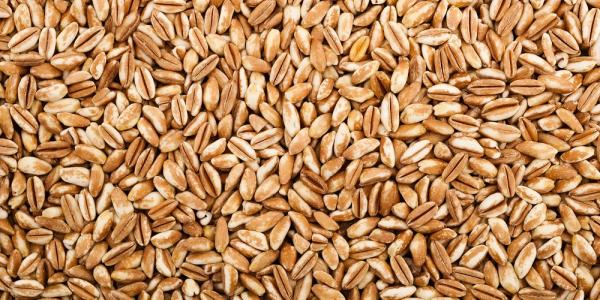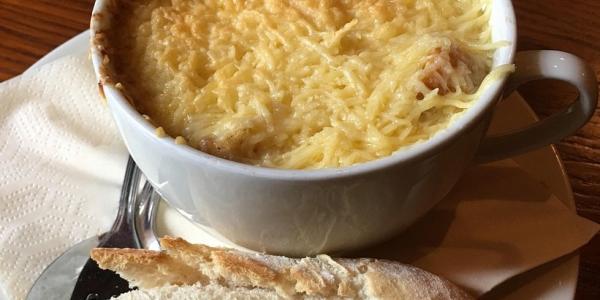Patatas Bravas

Ingredients
- 3 lb. Yukon gold potatoes
- Kosher salt
- 2 T. olive oil
- ½ c. julienne-cut shallots
- 3 garlic cloves, minced
- 1 t. hot paprika
- 1 t. smoked paprika
- ½ t. cayenne pepper
- 1 t. dried oregano
- 6 whole peeled canned tomatoes
- 1 T. honey
- 2 t. sherry vinegar
- Salt and pepper to taste
- 2 egg yolks
- 1 garlic clove, minced
- 2 T. lemon juice
- ½ t. lemon zest
- 1 c. olive oil
- Vegetable oil for frying
Preparation
Place potatoes in a large pan and cover with water seasoned with kosher salt. Simmer potatoes until nearly tender, about 12 minutes. Drain and let potatoes dry thoroughly. After dry and slightly cool, transfer to cutting board and quarter each potato; set aside.
For the Bravas sauce: Heat 2 tablespoons of olive oil in a sauté pan. Add shallots and lightly sauté for about 2 minutes; add garlic and sauté for one minute. Transfer shallot mixture to a food processor; add paprika, cayenne pepper, oregano, and tomatoes and pulse until coarsely mixed. Return mixture to sauté pan and simmer over medium heat for about 5 minutes. Off the heat, add honey and vinegar then season with salt and pepper to taste.
For the Aioli: In a medium bowl, whisk the egg yolks with the garlic, lemon juice, and lemon zest then gradually add oil in a thin stream, whisking constantly until a thick sauce forms. Season with salt and pepper to taste.
In a large sauce pan, heat 2 inches of oil until it reaches 350°F. Working in batches, fry the potatoes until deep golden-brown and crispy. Remove potatoes from oil with a slotted spoon and drain on paper towel. Season potatoes with kosher salt to taste. Serve with Bravas sauce and Aioli.
Learn More About Potatoes
All potatoes are not created equal. Amongst the several potato types in the produce aisle and even more at the farmers market, which potato to choose can be confusing. Unlike broccoli—there is no choice to be made. And unlike carrots of various sizes and colors—all do well no matter how you prepare them.
With potatoes, type matters. Try frying Red Bliss potatoes and you’ll have a grease-laden mess. Make potato salad with russets and they’ll disintegrate into a gooey mush.
Potato success comes from choosing the best potato for the cooking method.
- High-starch/low-moisture: russets and blue/purple potatoes. Flesh turns fluffy when cooked. Favorites for baking, mashing, and frying.
- Medium-starch: yellow flesh potatoes. The closest to winning the all-purpose award! Tender skin and butter-colored flesh holds up well to boiling. Pretty as mashed potatoes. Also bake and roast well.
- Low-starch: red potatoes, round white potatoes, and new potatoes. With a firm, waxy texture that holds its shape in cooking, these potatoes are meant to be boiled. A great starting point for potato salads. Excellent choice for roasting.
All potatoes need to be protected from light. Natural and artificial light causes a green cast on potato skin which may form a mild toxin. The best potato storage is a cool dark place with good air circulation, away from alliums (onions), and not in the fridge.
Featured Recipes

Rhubarb & Strawberry Crisp
Combine tart rhubarb with sweet strawberries, add a streusel topping, and bake until bubbly. Dessert doesn’t get easier—or more classic—than this. Serve warm with a scoop of vanilla ice cream. You’re sure to get rave reviews!

Farro Salad with Grilled Vegetables
Chewy farro grains are delicious in this autumn-y salad. Recipe yields enough for dinner for 2 to 4 with some left for a couple of lunches. To do this, make the base with dressing, farro, and grilled veggies. Add fresh veggies to the base as you go.

Pecan and Dark Chocolate Chip Cookies
Roasting amps up the flavor in everything including pecans. Chef Kurt's attention to detail takes a traditional chocolate chip cookie to another level of yum!

Onion Soup
Onions, the simplest of pantry staples, mingle with butter, broth, and herbs to become luxuriously smooth and delicious. Add "homemade" croutons and a blend of cheeses to make a complete and satisfying meal.





